

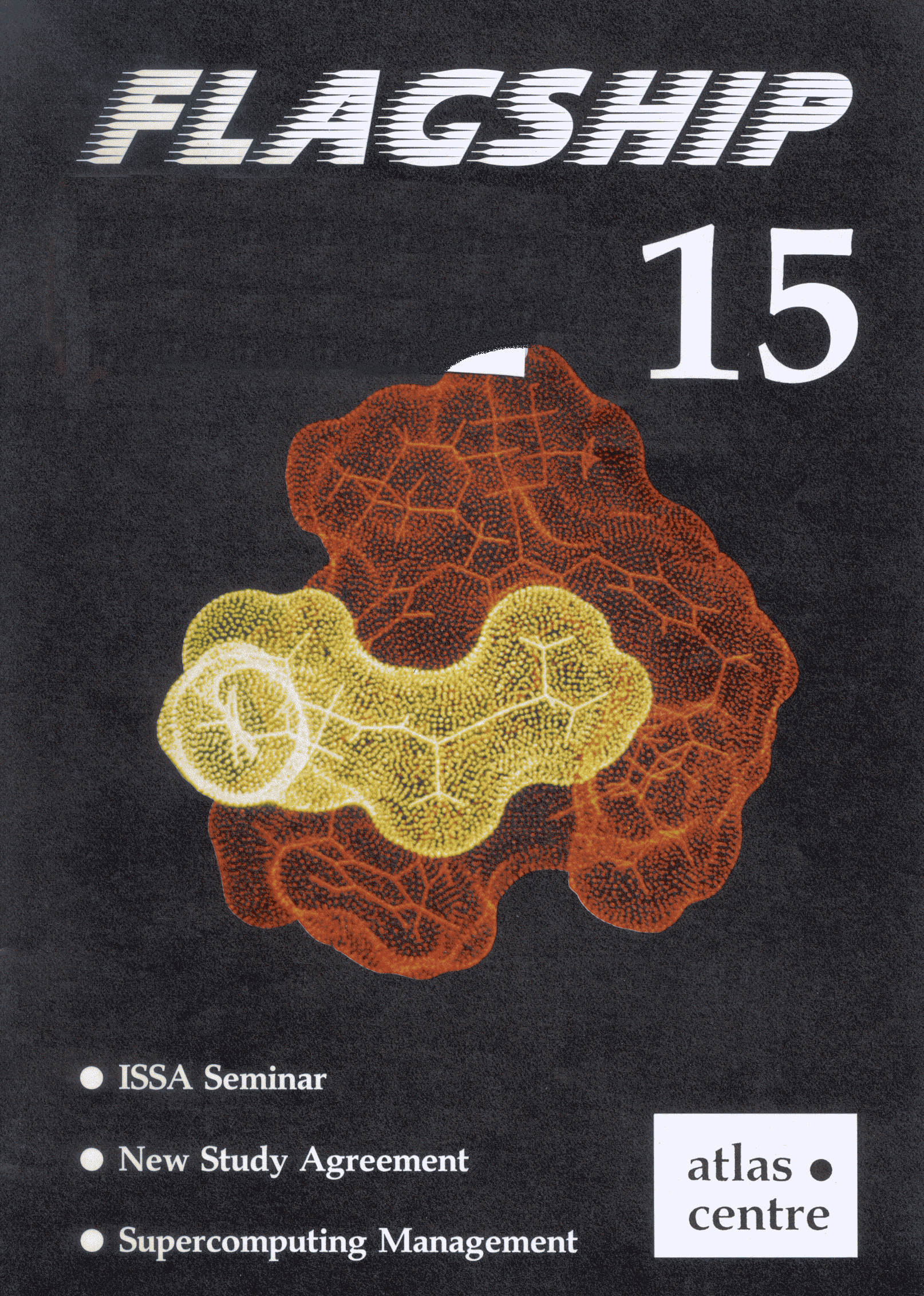
Front cover shows Modelling of Vancomycin-Peptide Interactions: the docking of a peptide (coloured yellow) with the drug Vancomycin (coloured red). Professor I H Hillier.
A seminar to mark the successful conclusion of the two-year Study Agreement between IBM and SERC on supercomputing and its applications to problems in science and engineering was held at the Rutherford Appleton Laboratory on Wednesday 15th May. Almost a hundred visitors from academic institutes and commercial companies and sixty staff from IBM and SERC attended
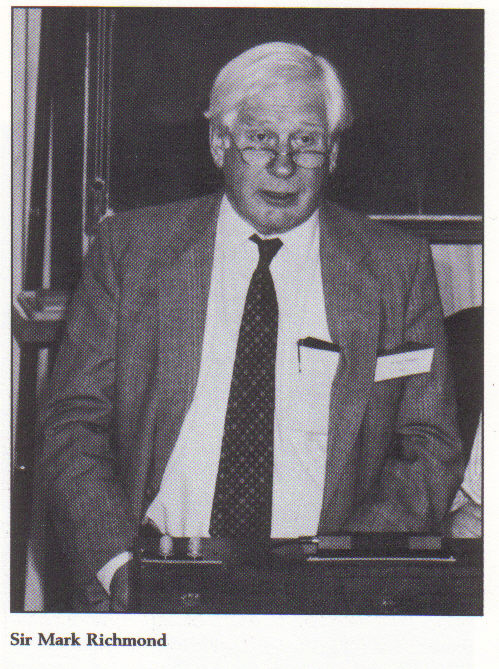
The proceedings were opened by the RAL Director, Dr Paul Williams, who introduced the guest speakers. Sir Mark Richmond, Chairman of SERC, said how pleased he was that the project had been such a success. SERC had clearly profited from the study and the scientific results could not have been achieved without the equipment provided by IBM. Supercomputing had become a significant branch of science. He cited an example from NASA where computer simulation of wind tunnels had enabled them to do away with the real thing, although having spoken to some senior academic engineers he was not convinced that this was true! Another example was from the Met Office where the most powerful supercomputers were required for research into climate change. He concluded by announcing a further Study Agreement between SERC and IBM which would concentrate on the integration of high performance work-stations into the supercomputing environment
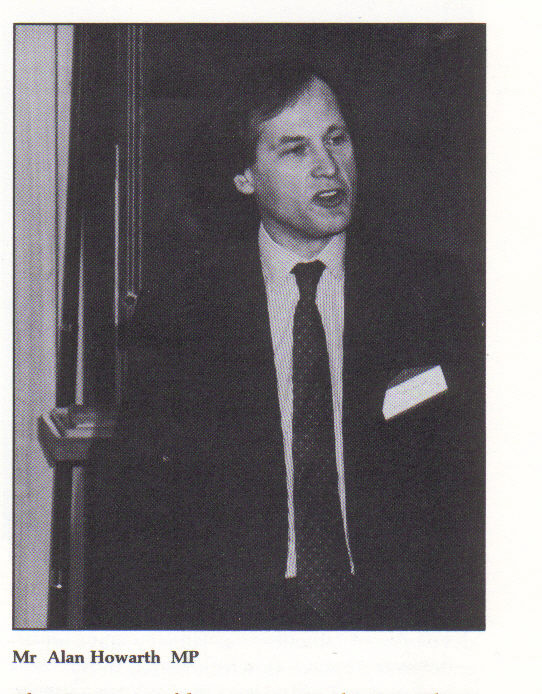
The Opening Address was given by Mr Alan Howarth MP, Parliamentary Under Secretary of State in the Department of Education and Science. He said that the IBM-SERC Agreement was a model for collaboration between academia and industry. He thanked IBM for their generosity in providing the equipment and paid tribute to the essential role played by IBM in the UK economy. He drew attention to IBM's support for a wide range of community projects and their contribution to education where they were helping to introduce a growing number of people to computers. He was convinced that in return IBM had gained from the prestige of being associated with a world class Laboratory. He recognised the computer as a tool to be used by the enquiring human mind, mentioning a range of applications, but wondered if there was an inherent limit to the speed of computers which could not be exceeded. He surmised that chaos theory might prevent the resolution of very complex systems.
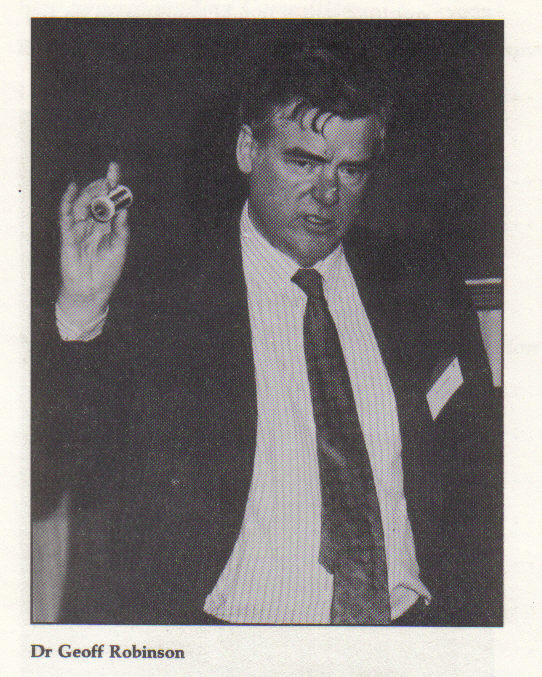
Dr Geoff Robinson, Director of IBM's development laboratory at Hursley, gave an entertaining speech in which he began by comparing and contrasting the development of science and computing over the last forty years. He said that in the '50s the investment in science and scientific equipment had been relatively small scale, but it had a rapid effect and large impact. Now, the scale of investment had become very large, but the impact was small. On the other hand, the scale of computers had decreased considerably with ever increasing miniaturisation over that period, but their impact had increased enormously. In price performance terms, computing had seen a compound growth rate of 30% per annum. If other technologies had followed suit it would be possible to buy a Rolls-Royce for £l and to go to the Moon and back on a gallon of unleaded petrol!
Dr Robinson continued by looking towards future developments. He expected parallel processing to play a much more significant role. He also noted that communications technology had developed much more slowly during the '70s and '80s and there was now a need for a massive improvement in bandwidth. The UK was well placed to take advantage of this, as IBM's worldwide HQ for telecommunications had moved to London. IBM was facing up to the need for change and was transferring its hardware development facilities to its manufacturing plants, such as Havant and Greenock. High powered workstations would also feature more heavily in IBM's future strategies.
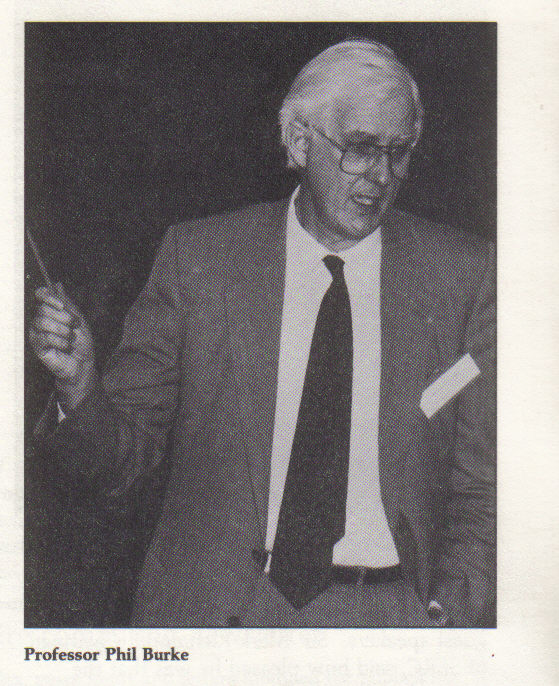
Professor Phil Burke from The Queen's University of Belfast took as his theme the role of supercomputing in industry and academia. His definition of high performance computing was a balanced hierarchy of supercomputers, local computing facilities and fast networks. He said that the 2.5 Gflops of computer power at RAL, ULCC and MCC were now saturated. He went on to list the non-academic supercomputers in the UK which were mainly in the oil and insurance industries. Here the total power was ten times as much at around 25 Gflops. He showed a league table of supercomputing power normalised per head of population for the nine most industrialised countries. The UK was in eighth place!
Turning to the future, he outlined some of the advances in technology that he expected to see over the next few years. These included remote observation and control of experiments, video conferencing, multi-media services, person to person communications and advanced data visualisation from supercomputing applications. He saw a number of "Grand Challenges" facing scientific and engineering research.
In astronomy there was galactic modelling and in biology the human genome project. Atomic and molecular scientists were concentrating on bio-reductive drug design and particle physicists on the search for the Higgs boson. Environmentalists were studying the circulation of atmospheric and ocean currents and the ways in which ozone depletion occurred. Material scientists were modelling semiconductors and superconductivity. Engineers were tackling three-dimensional fluid flow in aerodynamic design for military aircraft and space vehicles such as Hotol. Meteorologists were examining the effect of increases in carbon dioxide on surface air temperatures.
All of these projects would require teraflops of computing power by the mid to late 90's and the race was on to produce the first teraflop supercomputer. SuperJANET, based on optical fibre with bandwidths increased to 2 megabits per second, was needed for this sort of power to be exploited. Another factor often forgotten is the importance of access to high powered computing facilities as essential training tools for the Country's future scientists and engineers.
In the discussion which followed, Dr Robinson elaborated on his vision of massively parallel machines replacing traditional mainframes. He thought that the concept of the hypervisor which farmed out work to the processors would be replaced by a system in which the processors would fight amongst themselves for work. However he recognised that providing software for such a system was the major problem and it might never be possible to produce a completely general purpose machine. A lot of development work on automatic compilers was needed. Another point raised was that the projected bandwidths of 2 Mbps for national networks would not be nearly fast enough for the sort of applications which had been described.
After the excellent lunch provided by IBM, the afternoon was taken up with presentations of scientific results from four of the "strategic" users who had taken part in the joint study programme.
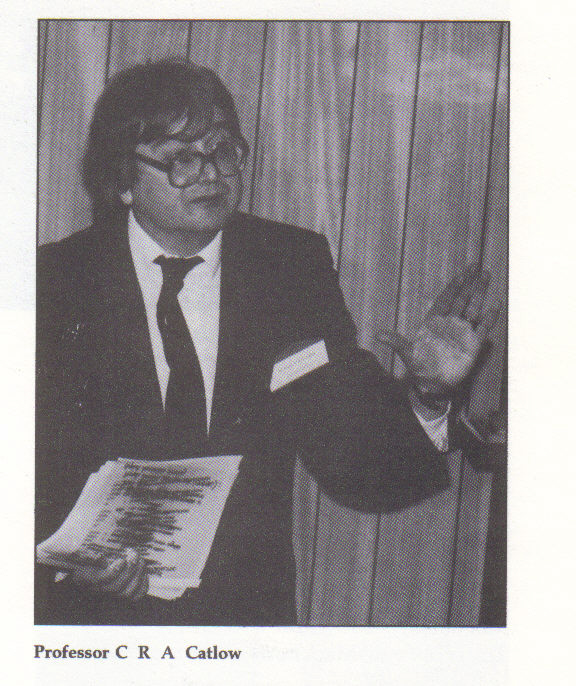
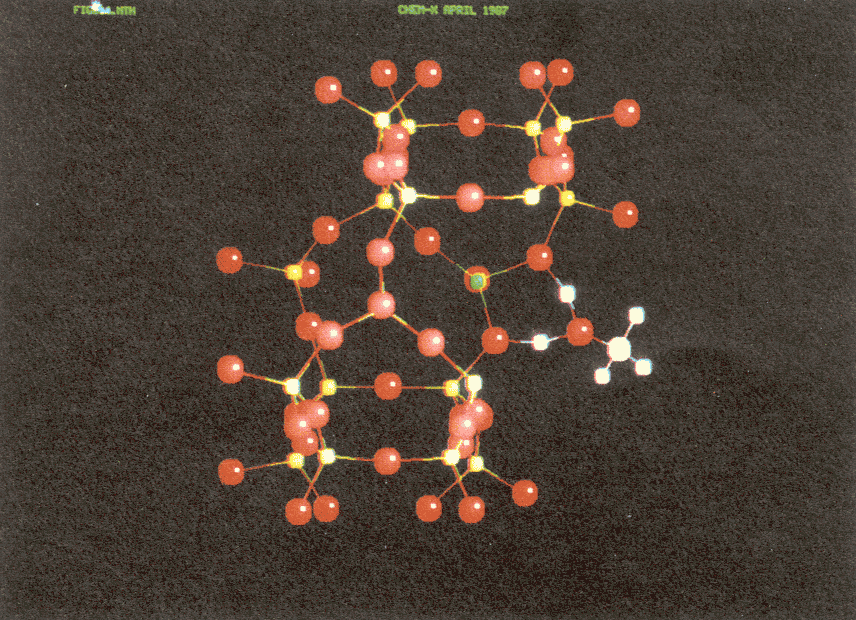
Professor Catlow highlighted the contribution of computational techniques to the understanding of complex processes in materials, especially those of importance as catalysts. He first showed how it is possible to study the detailed electronic structure of inorganic materials and to make accurate predictions of their crystal structures. Detailed modelling is possible of the processes of sorption and docking of molecules, which are key processes in catalytic reactions. Studies of reaction pathways within solids represent the most challenging problems in the field. To illustrate this he used the examples of methanol to gasoline conversion in microporous catalysts and the reaction of water with crystalline SiO2.
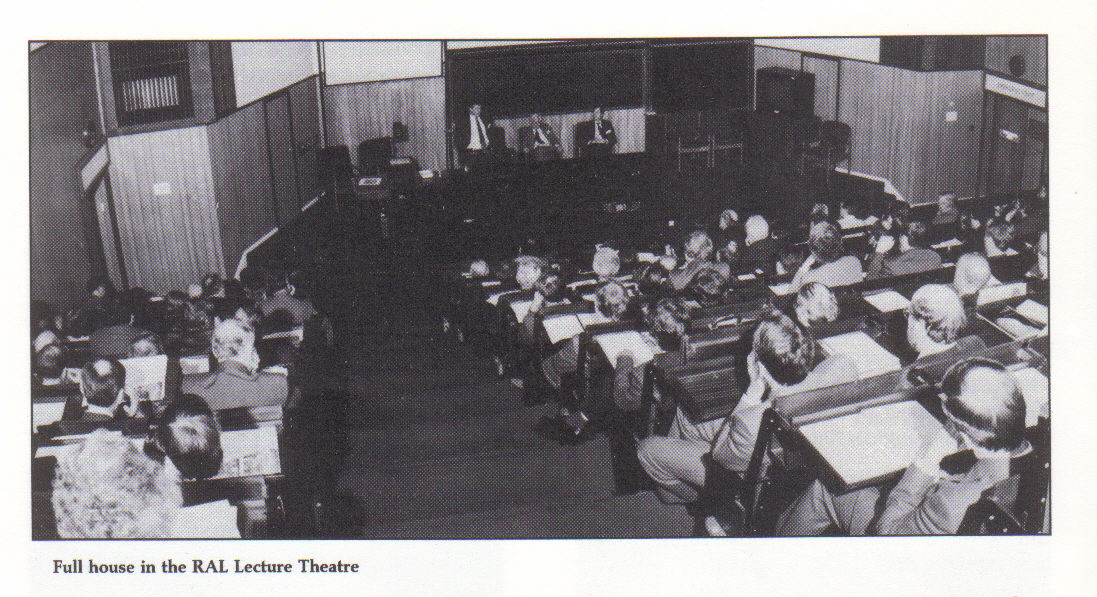
Professor Hillier illustrated the role of accurate molecular modelling studies in the area of drug design with two examples. Firstly, he described how the catalytic mechanism of the enzyme phospholipase A2 can be predicted. This is a prerequisite for the design of inhibitors of this enzyme, which may be valuable in the treatment of inflammatory disorders. His second example was the modelling of the binding of the antibiotic vancomycin to peptides, which is a model for its mode of action in preventing bacterial cell-wall synthesis. He stressed that both of these were large systems for which great accuracy was needed. Their resolution required the use of graphics and high speed links to the IBM supercomputer.
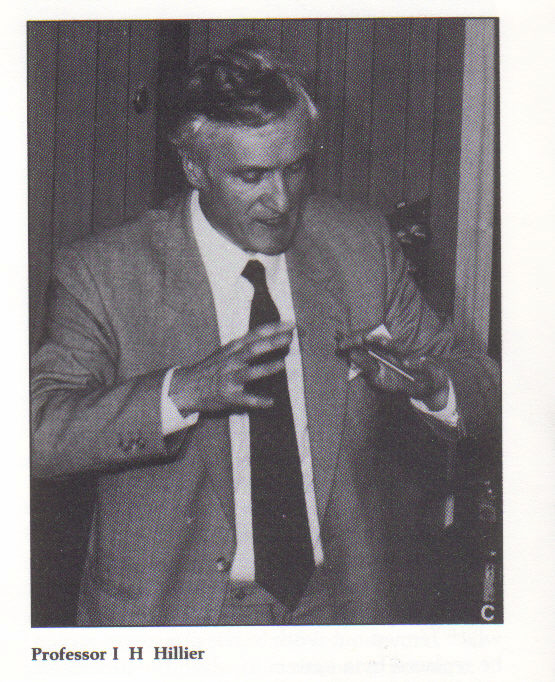
The theme of Professor Hayhurst's talk was how high-temperature technology can stimulate competitiveness in UK industry and how an ability to design plant and vehicles which are thermally efficient and which operate with high power to weight ratios can maintain a competitive edge in world markets.
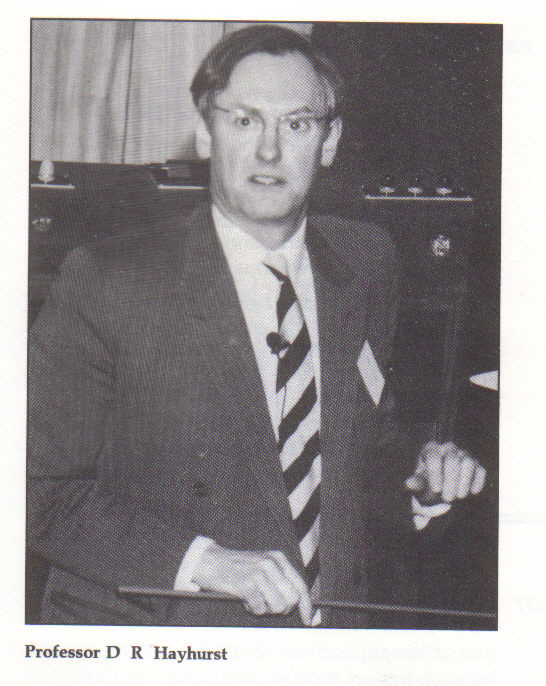
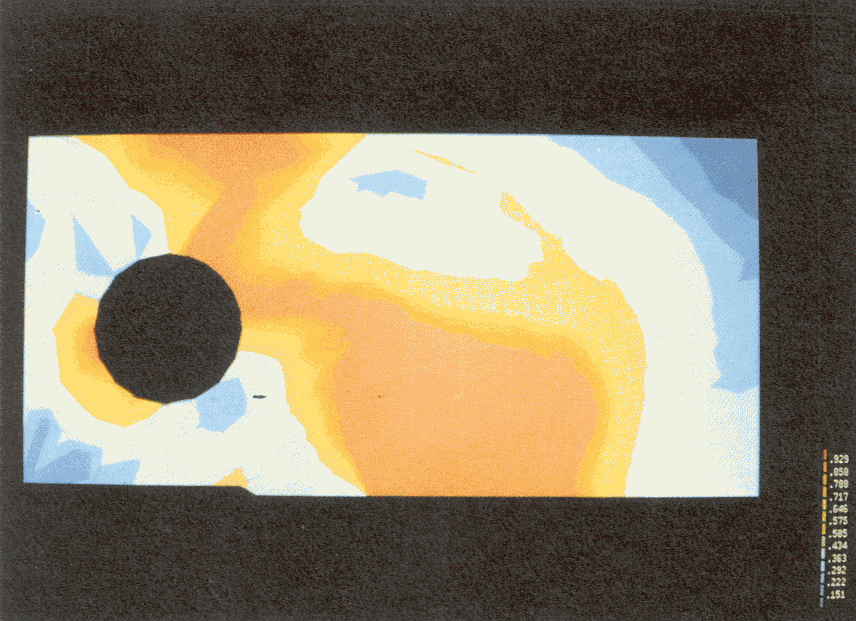
In the design of components to be fabricated with advanced metallic alloys for operation at temperatures in the range 800-1100 degrees Centigrade, the barriers to economic progress are the inability to model material behaviour, to use the models with supercomputer-based analysis techniques and to examine and interpret the output from supercomputer simulations in a form which engineering designers and materials engineers have been trained to observe. The work carried out under the IBM-SERC study agreement was aimed at overcoming these barriers to progress.
Professor Hayhurst reviewed the theory of Continuum Damage Mechanics upon which the computational procedures were based and explained how combined boundary and initial-value problems had been solved using the Finite Element Method. He showed how colour graphics and video animation techniques had been developed to present data obtained from supercomputer modelling for interpretation and decision making.
Colour animation videos, made on the Atlas Centre video facility, were shown to illustrate two different categories of materials. The first demonstrated a high-temperature creep mechanism producing the growth of a crack in a specimen under tension and the creep rupture of a weld in a pressurised steam pipe. The second showed the combined effects of high-temperature creep and cyclic plasticity on a Slag Tap subjected to cyclic thermal loading
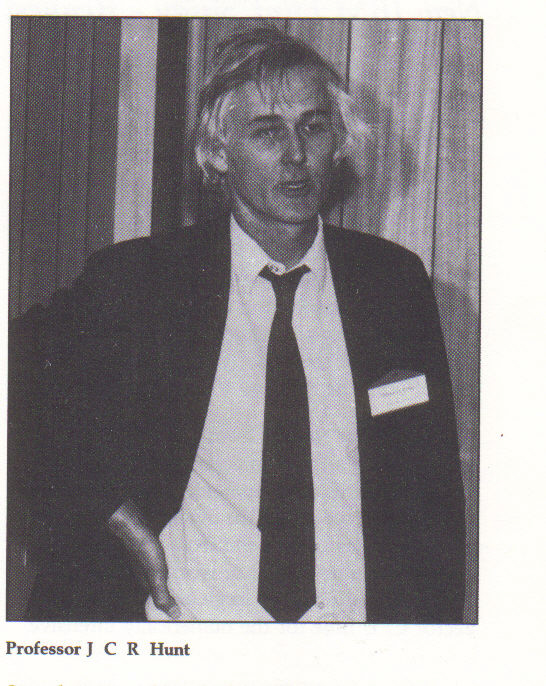
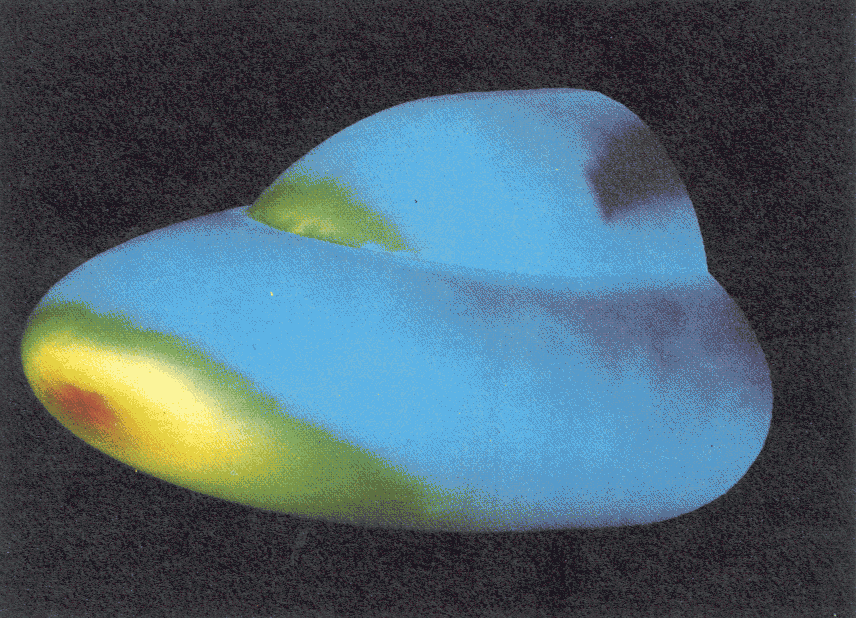
Professor Hunt said that to solve many of the practical problems involving engineering and environmental flows it is necessary to simulate the actual flow patterns and the distribution of matter within the flow, even if the flow is turbulent, as well as the statistics. He and his team had developed a novel approximate method to simulate these flows, particle motions and concentration distributions, and also to derive the statistics.
He mentioned two specific areas of study. The first was to show the relation between the rate of separation of pairs of fluid particles and the structure of turbulence. In particular, they had confirmed the results of some tentative experiments which showed that the rate is much lower than predicted by theoretical models. The computational simulation provided a nice explanation. This has important implications for modelling concentration fluctuations which may be higher than previously predicted.
A second application of the simulation was to predict how patches of pollution in coastal waters are dispersed. This was performed in collaboration with the Water Research Centre and the National Rivers Authority.
A report of the work carried out by nine of the Strategic Users has been produced and copies of this are available from the Atlas Centre, Rutherford Appleton Laboratory.
During the summer we plan to move to version 6.0 of the UNICOS operating system. This includes several performance enhancements over the existing system including:
The improvements to parallel performance are of particular interest as they should increase the benefits of autotasking. Apart from performance enhancements, UNICOS 6.0 also provides some new features. A few of the more notable ones are:
The interactive debugger cdbx has undergone a number of improvements. It is available with an X-Windows interface, may be used to debug multitasked codes and can be connected to a running process which makes it useful for debugging long batch jobs. The performance tools available with X-window interfaces are:
The increased importance placed on autotasking is reflected in UNICOS 6.0 with the introduction of three new X-Window based programming tools:
The proposed plan to run the TCP/IP protocol over the JANET network will, when it comes on-line, allow X-Windows applications to be run on the Cray remotely. When this happens it will be possible to use the above X-Window tools, and other X-based software, from workstations and PCs anywhere on the network. A pilot scheme already exists at Manchester, Edinburgh, London and RAL. Any users who have IP access to these sites who would like to try out this method of accessing the Cray should send a message to User Support c/o US@UK.AC.RL.IB.
To coincide with the introduction of UNICOS 6.0, we will be installing software to report megaflop statistics. As this software resides in one of the standard libraries, users will need to reload their object modules to get it to work. This can be done either with segldr or with one of the combined compiler/loaders (cf77, cf, cc or pascal, whichever is appropriate).
One change in UNICOS 6.0 which may affect some users is the withdrawal of the COS migration library. The majority of routines in the COS library are being moved into standard libraries, so for most users all that will be necessary is to remove the -1COS option from their load step. However, there are one or two routines which are being phased out altogether, most notably the dynamic memory allocation routine MEMORY. This uses a technique known as "extending blank COMMON" to allocate dynamic storage which is not recommended in UNICOS. The preferred method is to allocate memory from the heap and a routine called HPALLOC is provided for this purpose. For those who are interested, an article in FLAGSHIP 13 describes how to convert programs which use MEMORY to use HPALLOC instead.
The other main changes in UNICOS 6.0 are:
If anyone would like further information on the performance improvements, new features or changes in UNICOS 6.0, or on autotasking or dynamic memory management, they should contact me % US@RLIB or on (0235) 446780.
Following his successful film The Evolution of Form (which was shown in pole position at SIGgraph last year), William Latham's latest film Mutations - Work in Progress has been selected by the film jury for this year's SIGgraph in Las Vegas. This film has been made entirely at RAL on the Atlas Video Facility.
In FLAGSHIP 8 (March 1990) the work of William Latham, the artist in residence at the IBM UK Scientific Centre in Winchester, was described in Sculpting with Pixels. William has continued to work at Winchester and RAL, developing ever more complex models and scenes at Winchester and then using the IBM 3090 and Atlas Video Facility at RAL to render the final film and record it on videotape.
For this year's film, a new technique was developed whereby the rendered frames of the film, produced by the WINSOM solid modelling system on the IBM 3090, are converted on the same machine to the correct file format for the Abekas video disk and sent directly from the 3090 to the Abekas over Ethernet. This has speeded up the process to such an extent that much of the final film was made in the last couple of weeks available before the SIGgraph deadline. Previously the images had to be written to an Exabyte tape and sent to London for recording on 35mm film and the Abekas was only used for previewing the final film.
William Latham is now continuing the development of this exciting art form and has two further films planned, both of which he hopes to make at Atlas.
A meeting for all users of the Atlas Cray X-MP/416 was held in the Atlas Colloquium Room on 16 May 1991. Following brief introductory remarks from Professor Geoff Pert, Roger Evans pointed out that the Cray service was stable, although in view of the large oversubscription of work on the machine, users might not find the service entirely satisfactory.
Following comments from the previous user meeting, the job classes had been revised to include a "medium" length queue (m2) for jobs from 600 seconds to 6000 seconds duration. Many users had requested this, since a significant number of production jobs can be run in this class without having to queue behind the very large twenty-four hour jobs. The number of execution slots and the scheduling parameters have been set to attempt to equalise the ratio of cpu time to elapsed time for all job classes, with the exception of the large memory / large file store class - where jobs must be run one at a time for resource control. The user reaction was that the m2 job class had been a great benefit and for most purposes the current turnaround was tolerable given the excess demand for the Cray.
The reliability of the service was described in some detail: unscheduled breaks in service were less than once per week, half of these were either hardware or environmental problems (including loss of mains electricity) and half the remainder were in some way attributable to running the machine with an overload of user work both in numbers of jobs and memory and disk limits. Although CCD continued to try to improve reliability, major improvements could not be expected with the present hardware.
John Gordon described recent software acquisitions including Gaussian 88,CRAYFISHPACK, Amber and HSPICE. The fluid dynamics codes FLOW3D and PHOENICS and mark 14 of the NAG library were expected soon. Gaussian 90 had been released and was reputed to be much improved for multitasking performance; it is hoped that a licence will be purchased later this year. The new Atlas Cray User Guide was available with a large number of example jobs.
The introduction of "secure" UNICOS had given users more options for file security using Cray's access control lists (ACLs). These changes meant that the local "modgrp" command had to be reworked and no longer takes effect immediately. Instead, changes are updated every couple of hours.
"Project Shoestring", so called because of its low budget, has introduced the running of the TCP/IP protocols over JANET. The trials have been very successful and will move towards a full user service in September 1991. Users interested in this project for greater communications functionality, including running X windows over JANET, should contact their local computing centres to find out when the necessary equipment would be available.
Chris Osland reviewed the current graphics hardware provisions at RAL and the need to replace the Versatec large format colour printer. There is potentially a large matrix of user demands: monochrome text, monochrome graphics and colour graphics versus paper, fiche, 16/35mm film, overhead projector foils and video tape as the output media. Also, the volume of output and its viewing frequency could determine which devices were the best value for money. Users with particular needs were invited to contact Chris (CDO@RLIB).
Margaret Curtis introduced a brief review of the current grant approval mechanisms, since changes in this area could have a very real impact on users. The oversubscription at RAL and the change of hardware at ULCC had resulted in attempts to share out the user demand on to other machines where appropriate, and particularly in view of the embargo on new grants at ULCC, this had resulted in delays in grant approval.
With effect from the current grant round, a system of quotas had been introduced for the Research Councils, and in the case of SERC, for individual subject areas. At the council level, the split of the aggregate work over the three national centres was: SERC 65%, NERC 25%, MRC and others 10%. Within SERC, the split down to the subject committee level was producing a severe excess of requests over time available for physics and chemistry committees. After the current grant round there would be an opportunity to review how well the current system was working, particularly in the distribution of demand between the three centres.
Continuing the theme of new management structures, Brian Davies described the new committee structures from ABRC downwards. ABRC would have a sub-committee to advise on the strategy for academic supercomputing; this would be chaired by Sir Eric Ash and would have representation from academia and industry. The management of the supercomputing programmes at the three national centres had been devolved to SERC; SERC would be advised by the Supercomputing Management Committee (SMC) chaired by Professor Phil Burke. Local management committees at the three centres would report to the SMC and this would require a more formal user committee at Atlas to be introduced in the future.
The situation regarding the purchase of the Convex C3 at ULCC was described. Since ULCC would have an increase in capacity, it was hoped that new grants would be accepted at ULCC almost immediately. There was some concern that ULCC users wishing to stay with Cray hardware would cause an even greater demand at Atlas. The IBM 3090/600E at Atlas was still available for academic work, following a renewal of the study contract; users might like to consider moving work on to the IBM where appropriate.
In the afternoon general discussion, the possibility of acquiring some of the ULCC Cray hardware, particularly the DD39 disk drives, was raised. There was complete agreement that this should be attempted, assuming the cost was reasonable and that the increased capacity should be concentrated on the area available for temporary store for executing jobs. Atlas staff were also requested to pursue the possibility of transfer of software licences for the ULCC Cray to the Atlas Cray where possible.
The distribution of "news" items was discussed. These were posted on the IBM and VAX front ends but were not seen by users who submit jobs via JTMP. It was suggested that the UNICOS news command should be included in the sample jobs in the User Guide to encourage all users to use it frequently.
There was also a request for a single document that detailed all the facilities available at the Atlas Centre, for use when preparing grant requests.
It has been suggested that the next User Meeting to be convened, in the autumn, should be an "open invitation" meeting, similar to the current arrangements, and that immediately afterwards the new local "executive" committee should meet to decide actions and make forward plans.